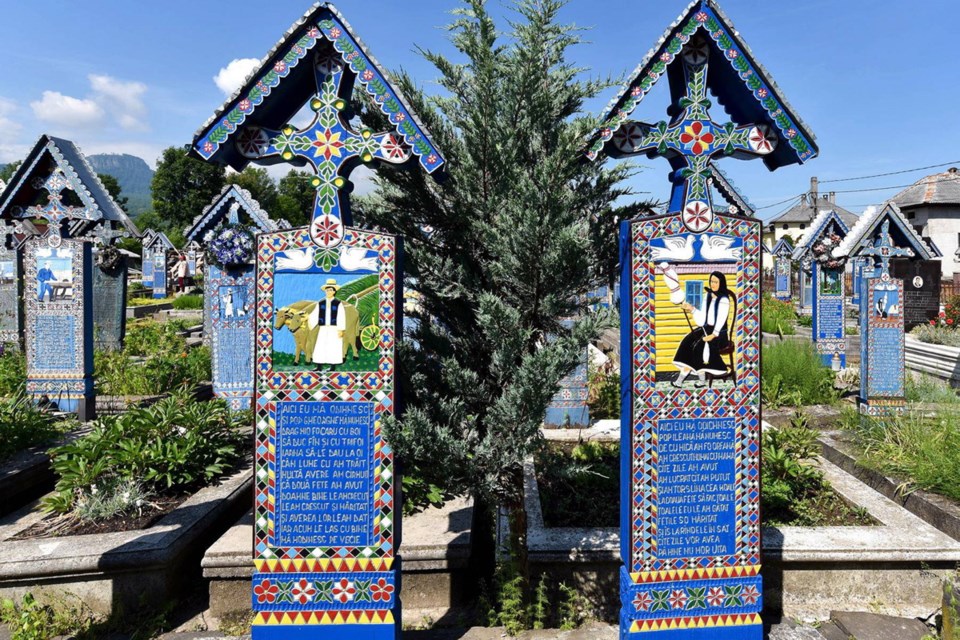Over the years, IŌĆÖve popped into a lot of burial grounds ŌĆö some peaceful and scenic, some eerie and evocative ŌĆö all revealing compelling stories of the past. Some high-profile places ŌĆö such as the catacombs in Rome or P├©re Lachaise Cemetery in Paris ŌĆö get a lot of press. These are some of my favourite lesser-known places to commune with Europeans long gone.
Cemetery of the Fountains (Naples)
The caves known as the Cemetery of the Fountains (Cimitero delle Fontanelle) are stacked with human bones and dotted with chapels. A thousand years ago, this was just a quarry cut into the hills north of Naples.
But in the 16th century, churches with crowded burial grounds began moving the bones of their long dead here to make room for the newly dead.
Later, these caves housed the bones of plague victims and paupers. In the 19th century, many churches again emptied their cemeteries and added even more skulls to this vast ossuary.
Then devout locals started to ŌĆ£adoptŌĆØ the remains. They named the skulls, put them in little houses, brought them flowers, and asked them to intervene with God for favours. If you visit this free sight in NaplesŌĆÖ gritty Sanit├Ā District, consider bringing some flowers, too.
Merry Cemetery (Maramure,┬ĀRomania)
In 1935, a local woodcarver in northern Romania ŌĆö inspired by a long-forgotten tradition ŌĆö began filling a local cemetery with a forest of vivid memorials. In the ŌĆ£Merry Cemetery,ŌĆØ each grave comes with a whimsical poem and a painting of the departed doing something he or she loved.
Despite the cemeteryŌĆÖs name, many of the gravesŌĆÖ poems are downright morose. Tales of young lives cut short by tragic accidents, warriors mowed down in the prime of life and those who never found happiness are reminders that life can be anything but cheerful.
Even if you canŌĆÖt read the poems, the images speak volumes: weaver ŌĆó loved bikes ŌĆó television repairman ŌĆó soldier ŌĆó┬Āhit by a car ŌĆó struck by lightning ŌĆó┬Ānagging mother-in-law.
ItŌĆÖs all painted a cheery blue to match the heavens where the souls are headed. ItŌĆÖs a poignant celebration of each individualŌĆÖs life, a chronicle of village history and an irreverent raspberry in the face of death.
Br├║ na B├│inne (Boyne Valley, Ireland)
Just 50 kilometres north of Dublin are two enigmatic burial mounds at the archeological site of Br├║ na B├│inne. These 5,000-year-old passage tombs ŌĆö Newgrange and Knowth (rhymes with ŌĆ£south") ŌĆö are massive grass-covered burial mounds built atop separate hills, each with a chamber inside reached by a narrow stone passage.
The tombs are both precisely aligned to the sunŌĆÖs movements so that a beam of light creeps down the passageway and lights up the chambers ŌĆö Newgrange at the winter solstice, and Knowth at the equinox.
Perhaps the ancients believed that this was the moment when the souls of the dead were transported to the afterlife, via that ray of light. At both sites, huge curbstones ŌĆö carved with spirals, crosshatches, bullŌĆÖs-eyes and chevrons ŌĆö add to the mystery. Thought-provoking and mind-bogglingly old, these tombs can give you chills.
Aître Saint-Maclou (Rouen, France)
When the Black Death took the lives of 75 per cent of this community in northern France in 1348, dealing with the corpses was overwhelming.
The half-timbered courtyard of A├«tre Saint-Maclou was an ossuary where the bodies were ŌĆ£processedŌĆØ ŌĆö dumped into the grave and drenched in liquid lime to help speed decomposition. Later, the bones were stacked in alcoves above the arcades that line this courtyard. The exposed wood timbers were later carved with ghoulish images of gravediggersŌĆÖ tools, skulls, crossbones and characters doing the ŌĆ£dance of death.ŌĆØ
In this danse macabre, Death, the great equalizer, grabs people of all social classes. A cat skeleton displayed here in a glass case was found in the wall; local historians believe it was a black cat buried alive to ward off evil.
Capuchin Crypt (Palermo, Sicily)
One of my oddest experiences in Sicily is finding myself surrounded by thousands of mummified bodies in the crypt of PalermoŌĆÖs Capuchin monastery.
When Capuchin monks passed away, it was common for their brothers to put the bones on show to remind people of their mortality. But the monks of Palermo didnŌĆÖt just display bones, they preserved entire bodies. Later, the monks realized they could charge wealthy parishioners for the privilege of being mummified, which became a fashionable way to be memorialized among some Sicilians.
By 1887, the practice had become forbidden except in special cases, and about 4,000 bodies had been collected in their crypt. Today, the public can wander this collection of fully clothed and remarkably preserved bodies.
All over Europe, youŌĆÖll find fascinating cemeteries and crypts to visit. Even long after death, the bones and memorials still have something to say.
Rick Steves (ricksteves.com) writes European travel guidebooks and hosts travel shows on public television and public radio. Email him at [email protected] and follow his blog on Facebook.


